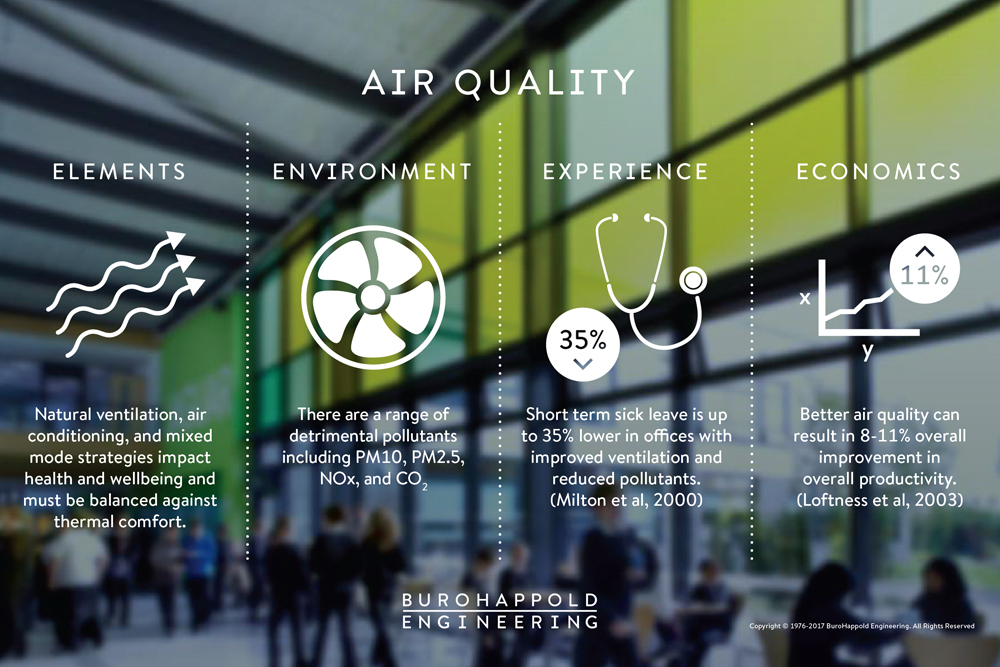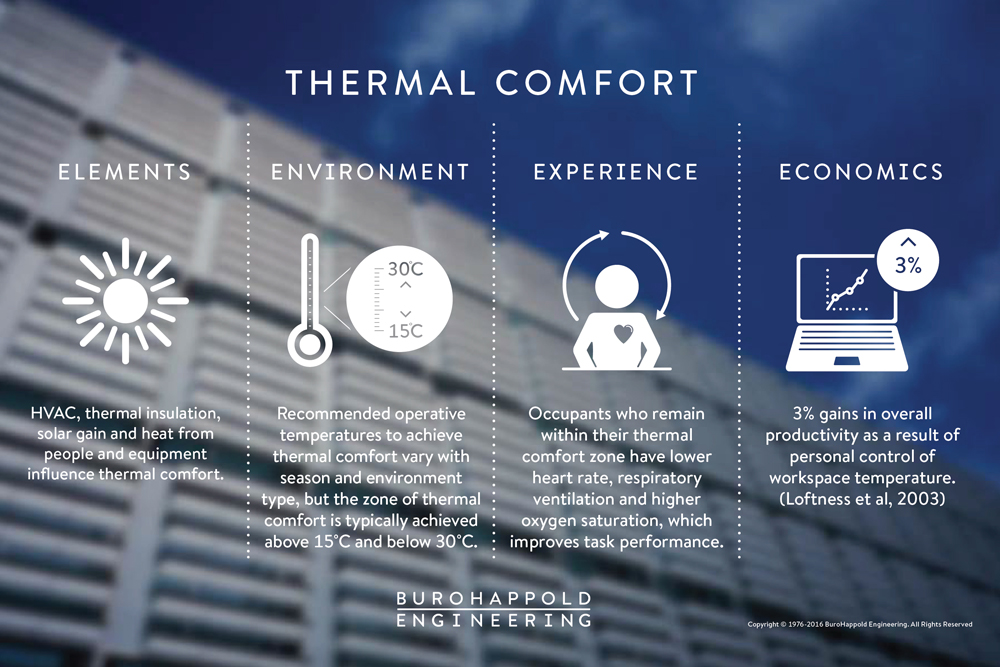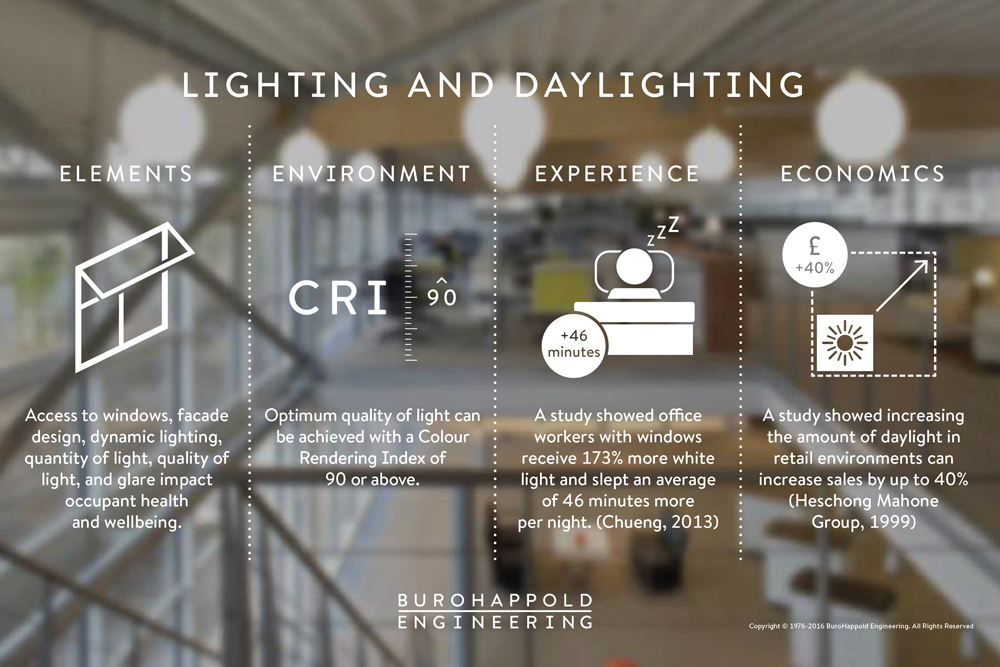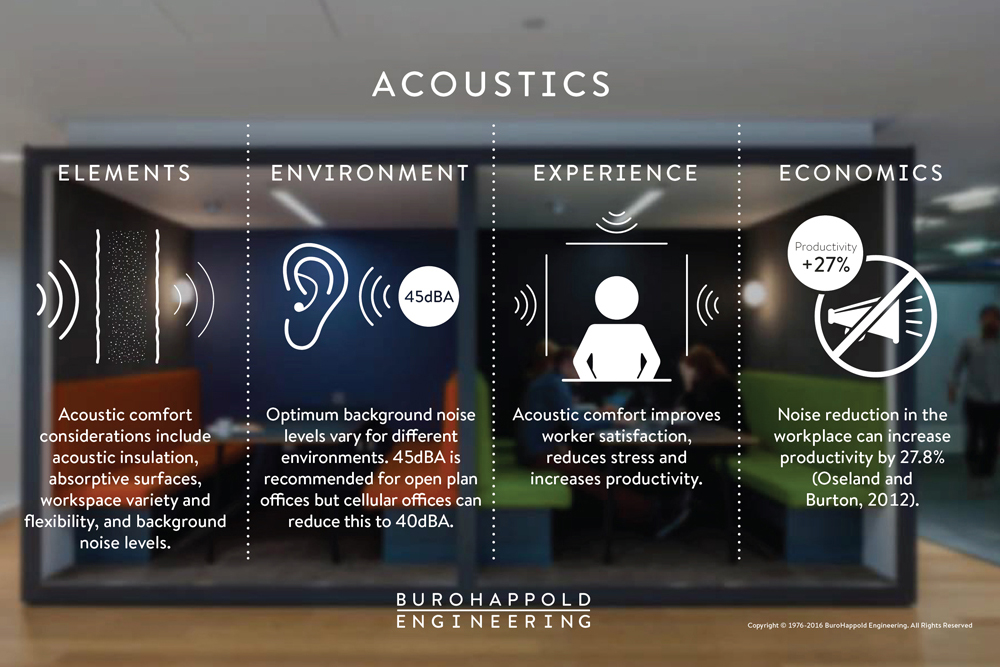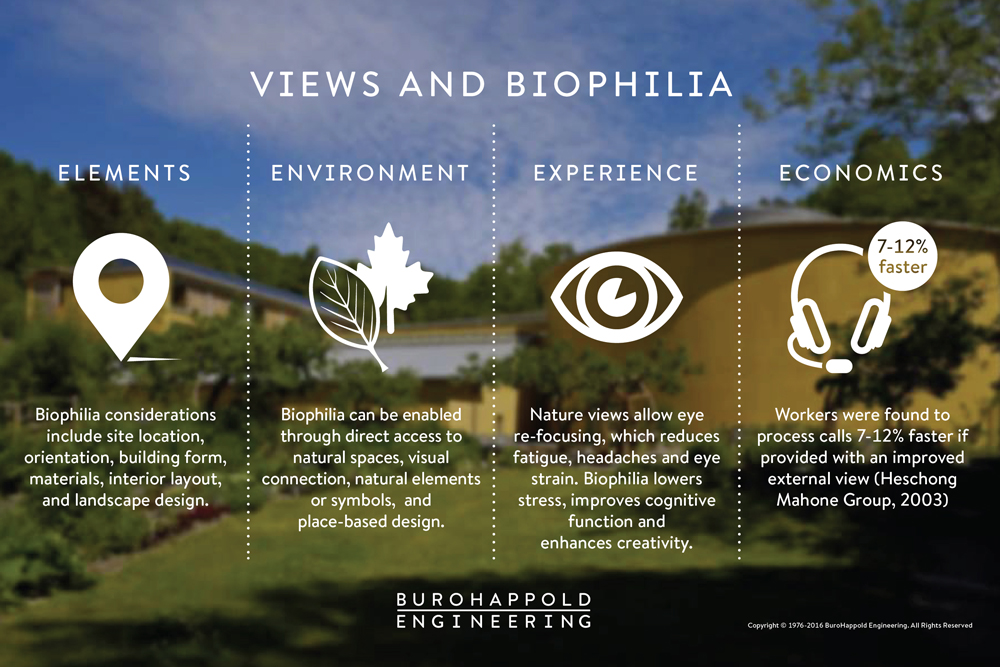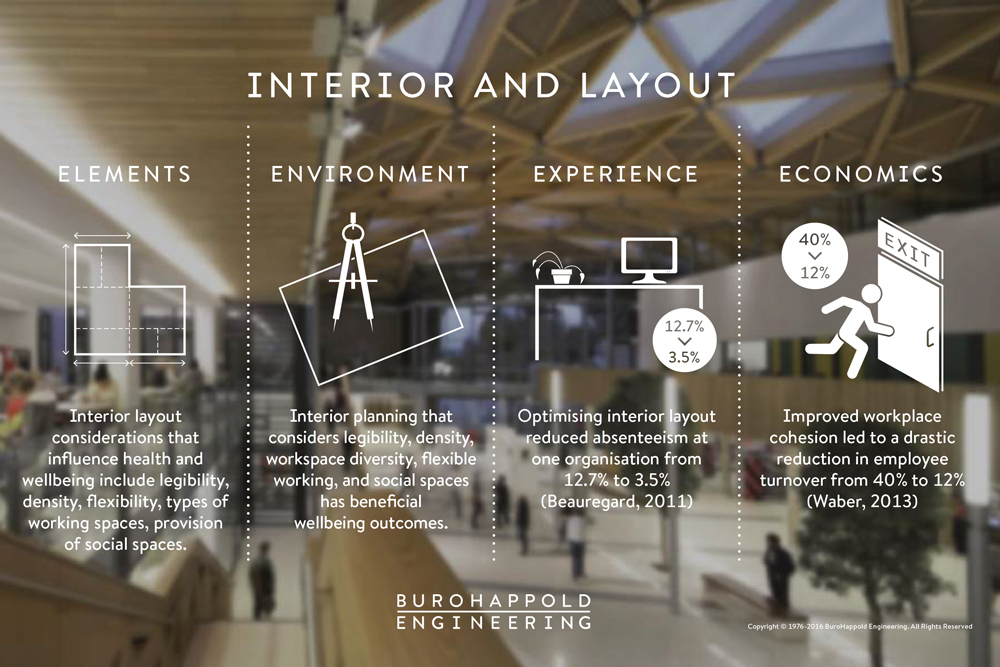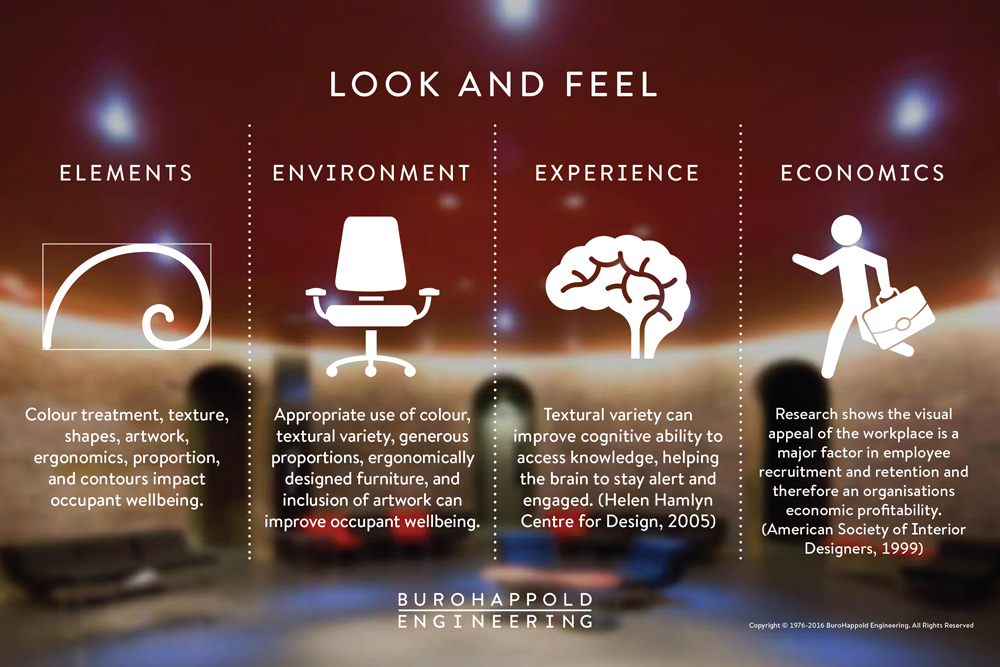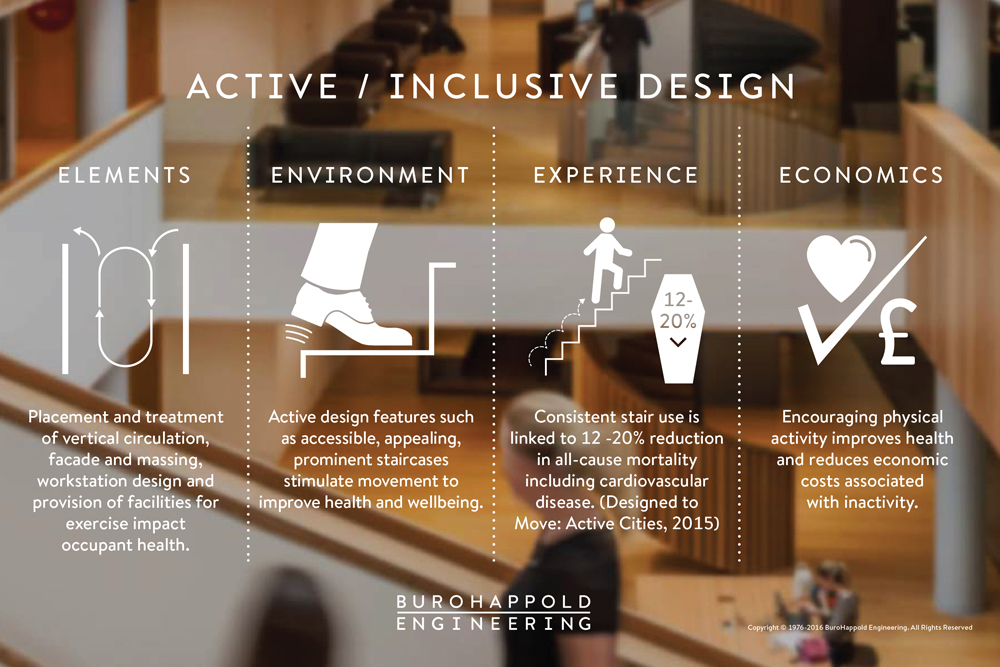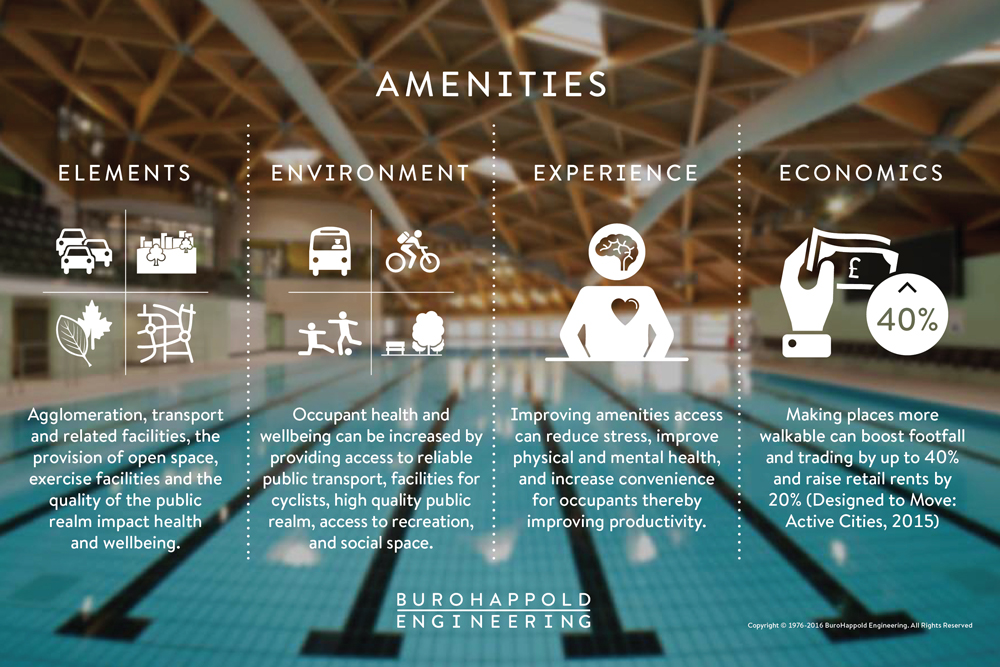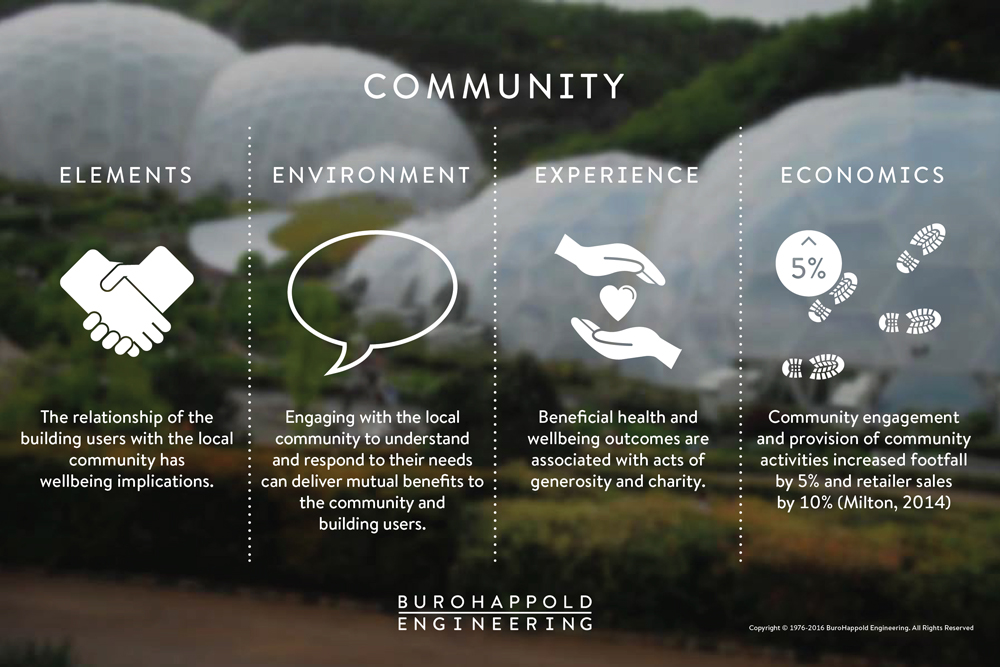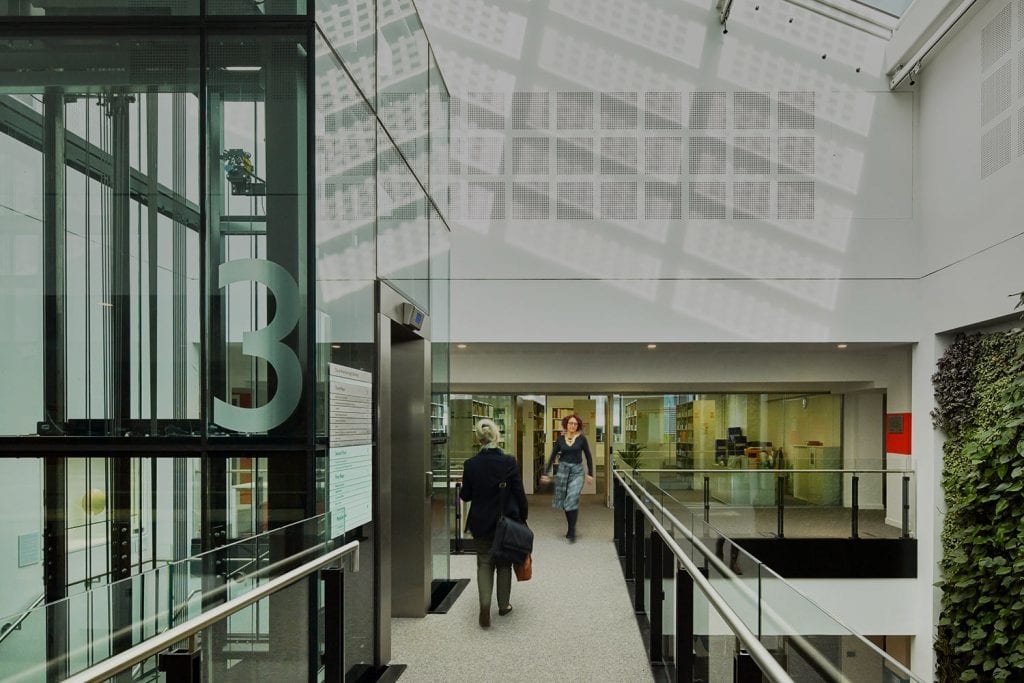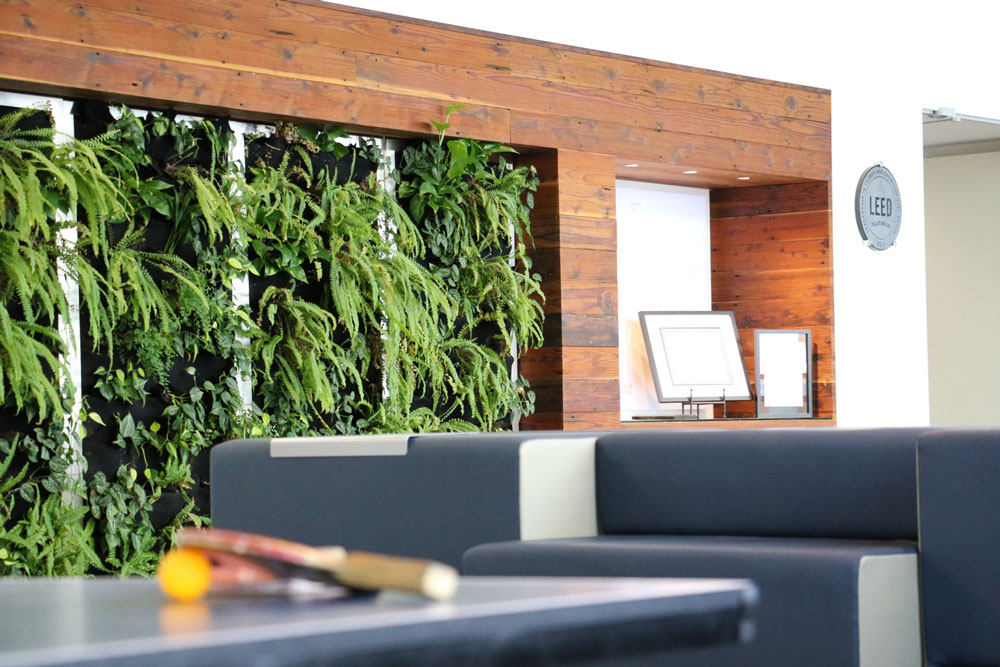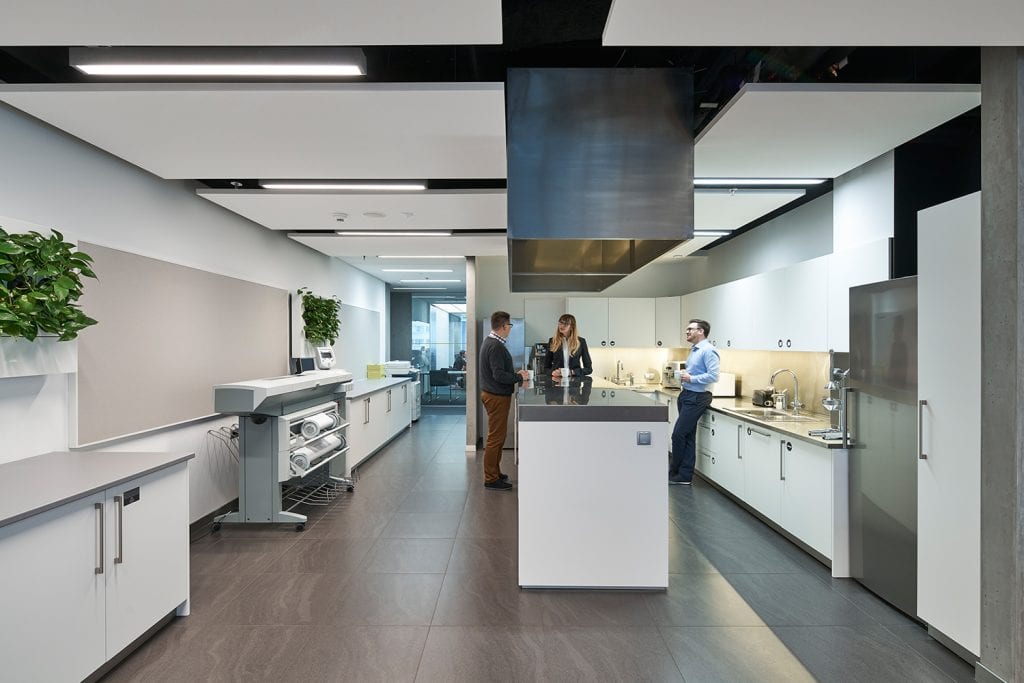The science of happy
Buro Happold was recently invited by Go Green and Triodos Bank to speak at a networking breakfast under the title of ‘science of happy’ as part of Bristol Healthy City Week, looking at the role of the environments we live in.

Associate Director, Dr Robert Cooke, from our Sustainability team followed on from a fantastic opening talk by Nicola Rich from Stride Treglown about their company journey to embracing mental health and wellbeing.
Happy is a highly contextual and relative term and therefore the ‘science of happy’ is highly contextual.
Happiness can be influenced by a wide range of factors but it is recognised that our physical infrastructure and environments can have a major impact on health, wellbeing and productivity (HWP) which are key features in the spectrum. Any strategy to improve the levels of HWP within a location needs to recognise the specific context of the location but broad context of all users, visitors or viewers of the space.
The challenges for each project are unique but the approach can be consistent across all scales, from small spaces, buildings to urban designs. There is a large amount of investment in the HWP market – and large amounts of emerging research and statistics – this is a rapidly developing area. Due to the contextual nature it is often difficult to draw direct percentage improvement outcomes to any one feature or response, though the general correlations show an overwhelming business and public value to focussing on positive HWP outcomes.
To help structure the issue it is possible to see the macro and micro economic benefits through the lenses of improved health, wellbeing and productivity of people, based on related features of the environments and design elements that influence these environments. With this structured approach it is possible to simplify and focus analysis and thinking such that outcomes can be predicted and delivered with greater certainty, which is often needed for clear decision making to justify investment decisions.
The ‘sub-productive’ spaces in cities, between buildings and inside our buildings are often ignored (together with the people that occupy these spaces) but these are the key areas of focus for increasing health, wellbeing and productivity. There needs to be more focus on effective design outcomes based on a clearer and more holistic definition of goals, rather ‘efficient’ design which can often ignore the wider issues and miss opportunities for people and projects to thrive. There are specific examples of this in practice which have proven socio-economic returns over the long term often demonstrated in revitalisation projects such as the High Line in New York, and the David Attenborough building at Cambridge University.
We are now applying these techniques on a wide range of projects due to demand and recognition of the benefits from clients and because we recognise that through applying HWP strategies on projects we can lift the outcomes from good to great.
Our ten tips for health, wellbeing and productivity in the workplace
